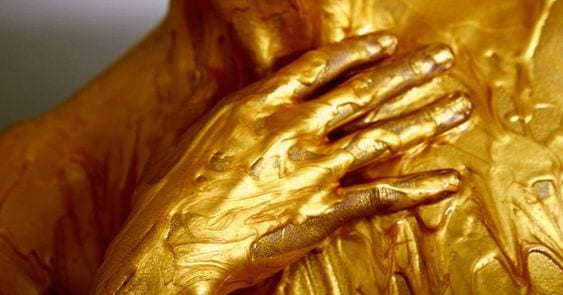 I love it. It’s a great space. I worked there for three years. We shouldn’t be spending federal money to repair it.
I love it. It’s a great space. I worked there for three years. We shouldn’t be spending federal money to repair it.
But according to the Los Angeles Times, Mayor Vincent Gray is seeking 15 million dollars in Federal Emergency Management funds to help the Cathedral make the repairs needed after an earthquake rocked the limestone perched high above our nation’s capitol.
Why not?
One: the separation of church and state
Far too many interpret the freedom we allow for religion as freedom from religion. But using federal funds to repair the great lady is going too far in the opposite direction. To single out any religious institution — even one that hosts “great national occasions” and the funerals of notable leaders — creates a dangerous precedent. The only place to draw that line is between the civic and the religious world.
Two, non-Christians should not be expected to pay for a distinctively Christian and Episcopal space
The Cathedral’s official name is the Cathedral Church of St. Peter and Saint Paul and it includes the seat (or cathedra) of both the Presiding Bishop of The Episcopal Church and the Diocesan Bishop of Washington. The structure itself, inspired by Gothic architecture has two messages: (1) There is a God. (2) You are not. And the stone image of the resurrected and glorified Christ high above the main altar makes a pretty definitive statement about who that God is.
Non-Christians, agnostics, and atheists should not be expected to pay for its repair. That doesn’t ever make sense in a country that observes the division of church and state and it makes particularly little sense in a time of financial exigency — though the latter is plainly a secondary consideration.
Three, it’s not good for the Cathedral, the denomination, or the church in general to receive this kind of aid
The church has always been better off when it has been forced to articulate its message without crafting alliances with governments and politicians. By definition, the Gospel (and, by inference) the church has a message that has its own inner logic and a very different vision of the world.
Historically, the church has observed two means of articulating that message. One, championed by the Anabaptists, insists on a radical disengagement or a posture over against the rest of the world. The strength of that vision lies in its simplicity and clarity. Its Achilles heel is the potential for rigid self-righteousness and self-imposed irrelevancy.
The other vision, which is more commonly the one championed by many Catholics and Protestants is one of engagement. Its strengths include the ability to speak knowledgeably to realities of daily life. The Achilles heel of that view is the danger of being co-opted in ways that make it impossible to hear an authentic word from God that is not compromised by subtle alliances with “the princes of this world.”
It is not good for the Cathedral or the church to have this kind of help. You can get tired of telling visitors that “Washington National Cathedral receives no money from the federal government,” but that’s a good thing. And the gift of the kind that the Mayor proposes has social and intellectual strings attached that no church can afford, unless it has lost interest in its God-given mission.
And therein lies an issue that every ecclesiastical institution should ask itself…Is the church simply one civic organization among others, or is it a body of people called to serve the purposes of Christ in the world?
As much as I love the Cathedral, I’ve long thought that the only sense in which it can really be a national cathedral is to serve the purposes of Christ in ministering to the residents of the nation’s capitol. The rest of what attaches to that name is deeply seductive and of a piece with the Achilles heel of an understanding of the church that values engagement.
Try as it may, the Cathedral cannot engage the whole country because its purposes are not (and should not be) one and the same as those of the United States.
- It does not have chapels for other religions, a mosque, or a synagogue.
- It can sponsor interfaith services, but if it fails to do that from a distinctively Christian stance, it has already subverted the effort to foster genuine, interfaith dialogue.
- What happens there is of little or no interest to the people of Kansas City or Los Angeles (unless it happens to be a “state day” at the Cathedral). And contrary to obsessions fostered by life inside the Beltway, life in our nation’s capitol is as likely the occasion for frustration to the rest of country, as it is an occasion for fascination.
- And, perhaps, most important of all, it cannot serve a mission that is meaningfully the mission of every church, if it loses its capacity to speak with a distinguishable voice that is — however falteringly and imperfectly — the voice of God.
On that score, the inability of the Cathedral and the denomination to make the needed repairs suggests that something else might be broken as well.












